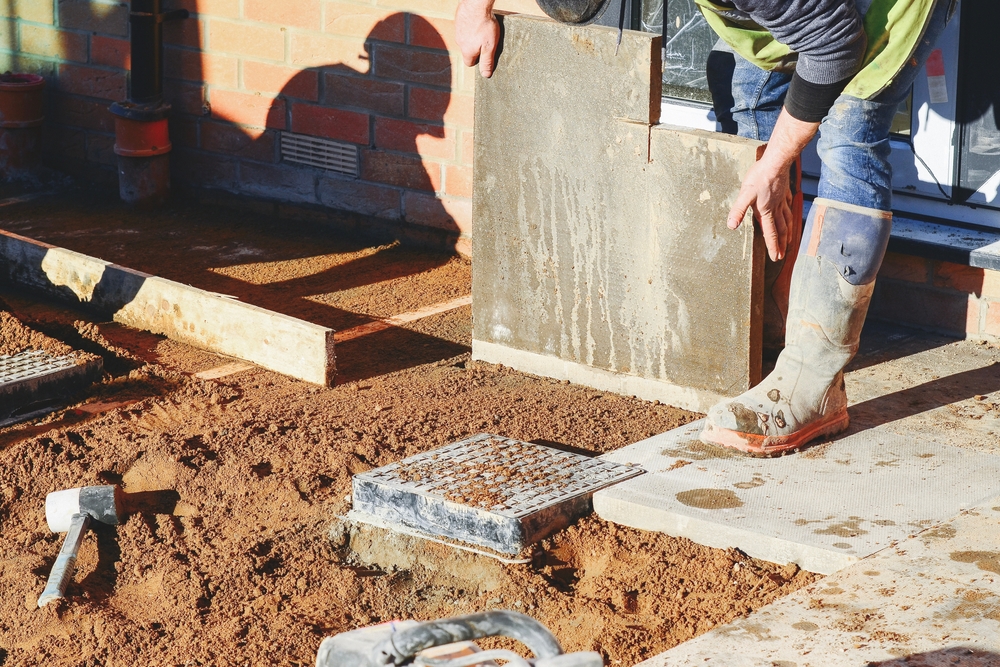
The Importance of Proper Subgrade Preparation in Flatwork
Subgrade preparation is a foundational aspect of any successful flatwork project. Whether it’s a driveway, sidewalk, warehouse floor, or expansive commercial slab, the subgrade serves as the base upon which the concrete rests. This underlying layer must be carefully planned, properly graded, and thoroughly compacted to support the concrete above. Improper subgrade preparation can lead to structural failures, costly repairs, and diminished longevity. For builders, engineers, and contractors alike, understanding the nuances of subgrade preparation and meeting concrete subgrade requirements is critical for durable and high-performing concrete flatwork.
Understanding Subgrade Preparation
Subgrade preparation refers to the process of readying the soil or base material that lies directly beneath a concrete slab. This process includes grading to ensure proper slope, moisture conditioning, and compaction to the required density. A well-prepared subgrade provides uniform support to the slab, distributes loads evenly, and prevents settlement, cracking, and surface imperfections.
The soil type and site-specific conditions influence how subgrade preparation should be performed. For example, expansive clays that swell and shrink with moisture changes require different treatment compared to stable granular soils. In many cases, additional measures such as the installation of a subbase layer (composed of gravel or crushed stone) are employed to further stabilize the subgrade and meet stringent concrete subgrade requirements. The ultimate goal is to create a firm, level, and stable foundation that will not shift or degrade under the stress of traffic and environmental factors.
Moreover, drainage is a critical component. Water is one of the most destructive forces to concrete subgrades. Without proper drainage, water can accumulate beneath the slab, weakening the soil and leading to frost heave, erosion, or settlement. Therefore, site grading and the integration of drainage systems like weep holes, ditches, or subdrains are often part of comprehensive subgrade preparation strategies.
Concrete Subgrade Requirements and Standards
Concrete subgrade requirements are established to ensure that slabs are laid on a surface capable of supporting expected loads without failure. These requirements often include specifications for soil bearing capacity, moisture content, compaction, and flatness. For residential applications, subgrades are typically compacted to 90% to 95% of the maximum dry density as determined by standard Proctor tests. For commercial and industrial applications, even higher compaction levels may be required to handle heavier loads.
Another essential aspect of concrete subgrade requirements is uniformity. The subgrade must be consistent in material composition and compaction across the entire slab area. Any inconsistencies can lead to differential settlement, which manifests as cracks or uneven surfaces in the finished concrete. For this reason, thorough soil testing and quality control during construction are vital.
In many jurisdictions, building codes and engineering standards provide detailed guidance on what constitutes a suitable subgrade. ASTM standards such as D1557 and D698 help determine the soil compaction specifications, while ACI (American Concrete Institute) guidelines like ACI 302 and ACI 360 provide best practices for slab-on-grade construction. Adhering to these standards ensures compliance, safety, and performance, helping project teams avoid the pitfalls of inadequate subgrade preparation.
Consequences of Inadequate Subgrade Preparation
The failure to properly prepare the subgrade before concrete placement can have serious and long-term consequences. One of the most common issues resulting from poor subgrade preparation is slab cracking. When the subgrade settles unevenly or lacks sufficient support, the concrete slab may crack under load or environmental stress. These cracks not only detract from the visual appeal of the structure but also compromise its structural integrity.
Another problem associated with inadequate subgrade preparation is curling and warping. When moisture is not evenly distributed in the subgrade or slab, differential drying can cause the edges of the slab to lift or curl, leading to trip hazards and damage to joint integrity. Such issues can be especially problematic in warehouse floors and industrial settings where machinery and foot traffic are frequent.
Drainage problems also arise when the subgrade does not properly shed or manage water. Accumulated moisture under the slab weakens the supporting soil, resulting in voids, erosion, or frost-related movement in colder climates. Over time, this undermines the entire concrete structure, necessitating expensive repairs or complete replacement.
Furthermore, neglecting to meet concrete subgrade requirements can result in legal and liability issues, especially in commercial or municipal projects. If a structure fails due to poor subgrade practices, the contractor or engineer may be held accountable for damages. In this context, investing in thorough and well-documented subgrade preparation is not just a technical necessity, but a risk management strategy.
Best Practices in Subgrade Preparation
Effective subgrade preparation starts with a comprehensive site assessment. Understanding the soil type, load requirements, and environmental conditions allows for informed decisions about treatment methods and material selection. In some cases, stabilization techniques such as lime or cement treatment may be required to improve weak or expansive soils.
After clearing and excavation, grading ensures that the subgrade slopes away from structures to facilitate drainage. At this stage, any soft spots should be identified and corrected to ensure uniform bearing capacity. Geotechnical evaluations, including dynamic cone penetrometer (DCP) tests or nuclear density testing, can verify compaction levels and highlight potential problem areas.
Moisture conditioning is another critical step in the process. Soils that are too dry may absorb water from freshly poured concrete, compromising hydration and curing. Conversely, overly wet soils can prevent proper compaction. Achieving optimal moisture content before compaction ensures a firm and stable base.
Once moisture content is adjusted, the subgrade is compacted using heavy machinery like rollers or plate compactors. The choice of equipment depends on the soil type and project size. The compacted surface should be inspected for flatness, firmness, and uniformity before concrete is poured.
In many projects, a subbase layer is added atop the subgrade for additional stability and drainage control. This layer, often composed of gravel or crushed stone, further distributes loads and minimizes movement. Geotextile fabrics may also be used between the subgrade and subbase to separate materials and reduce contamination or mixing, particularly in areas with fine or expansive soils.
The Long-Term Value of Quality Subgrade Preparation
While subgrade preparation may seem like a minor component in the overall scope of a concrete flatwork project, its impact on long-term performance cannot be overstated. Investing time and resources into proper subgrade treatment results in a more durable and maintenance-free surface. This is particularly important for commercial applications such as warehouse floors, loading docks, and parking areas, where the costs of downtime and repairs can far exceed initial preparation investments.
In residential applications, well-prepared subgrades reduce the likelihood of cracked driveways, settled patios, and uneven walkways. These improvements not only enhance curb appeal but also contribute to property value and homeowner satisfaction. For public infrastructure such as sidewalks, bike paths, and bus stops, a stable subgrade ensures safety and reduces maintenance costs for municipalities.
Sustainability is another key consideration. A properly compacted and drained subgrade reduces the risk of premature failure, thereby minimizing the environmental impact associated with repair and reconstruction. Moreover, quality subgrade preparation can support the use of thinner concrete slabs without sacrificing performance, conserving materials and reducing carbon emissions.
Conclusion
Subgrade preparation is not merely a preliminary task in flatwork—it is a crucial phase that influences every aspect of the concrete’s performance. By meeting concrete subgrade requirements and adhering to best practices, project stakeholders can ensure long-lasting, safe, and efficient structures. Proper planning, rigorous execution, and adherence to standards pay dividends in durability, aesthetics, and cost savings, making subgrade preparation an essential component of any successful concrete flatwork endeavor.
Need a Masonry & Concrete Contractor Near You?
Welcome to Langenfeld Masonry & Concrete! Family owned and operated, Langenfeld Masonry & Concrete has been servicing Racing, Kenosha, and South Milwaukee counties since 1912. Our years of experience in the industry have built us a reputation within the community as the premier masonry and concrete contractors in the area. At Langenfeld Masonry & Concrete, we specialize in driveways, patios, sidewalks, and concrete repair. In addition, we also offer basement waterproofing, foundation pouring, repair, and more. For five strong generations, we have been dedicated to being the best at what we do, and it shows. Come see what sets us apart from the competition and why we have truly passed the test of time. Call us today for your free estimate.
More...
Categorised in: Commercial Masonry




